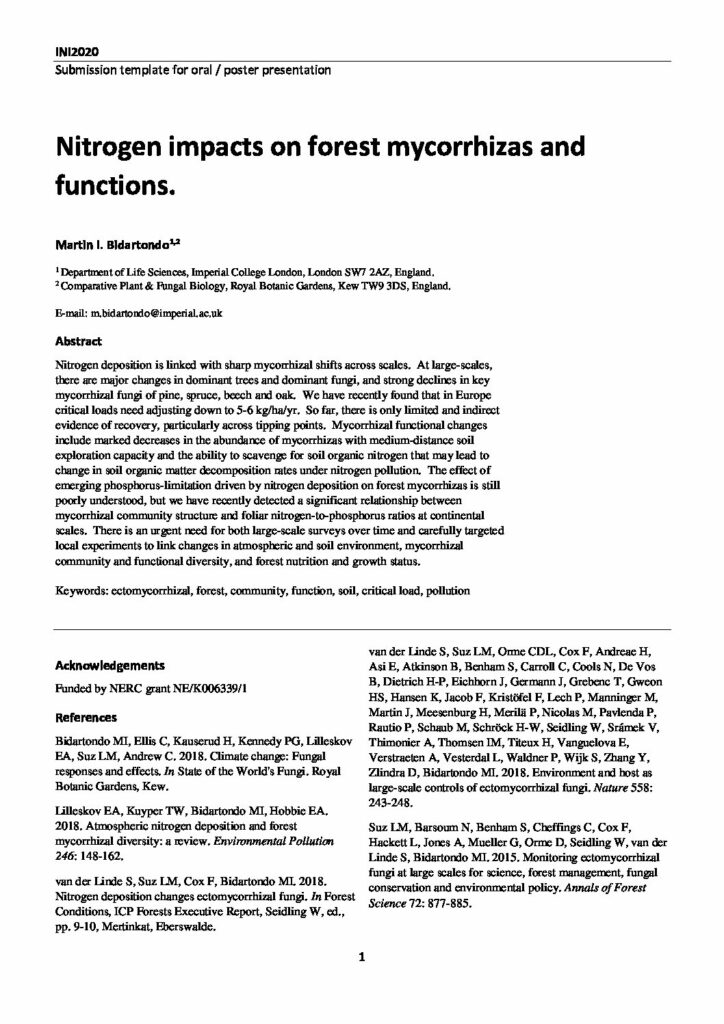Nitrogen impacts on forest mycorrhizas and functions

Nitrogen deposition is linked with sharp mycorrhizal shifts across scales. At large-scales, there are major changes in dominant trees and dominant fungi, and strong declines in key mycorrhizal fungi of pine, spruce, beech and oak.
We have recently found that in Europe critical loads need adjusting down to 5-6 kg/ha/yr. So far, there is only limited and indirect evidence of recovery, particularly across tipping points. Mycorrhizal functional changes include marked decreases in the abundance of mycorrhizas with medium-distance soil exploration capacity and the ability to scavenge for soil organic nitrogen that may lead to change in soil organic matter decomposition rates under nitrogen pollution.
The effect of emerging phosphorus-limitation driven by nitrogen deposition on forest mycorrhizas is still poorly understood, but we have recently detected a significant relationship between mycorrhizal community structure and foliar nitrogen-to-phosphorus ratios at continental scales. There is an urgent need for both large-scale surveys over time and carefully targeted local experiments to link changes in atmospheric and soil environment, mycorrhizal community and functional diversity, and forest nutrition and growth status.
